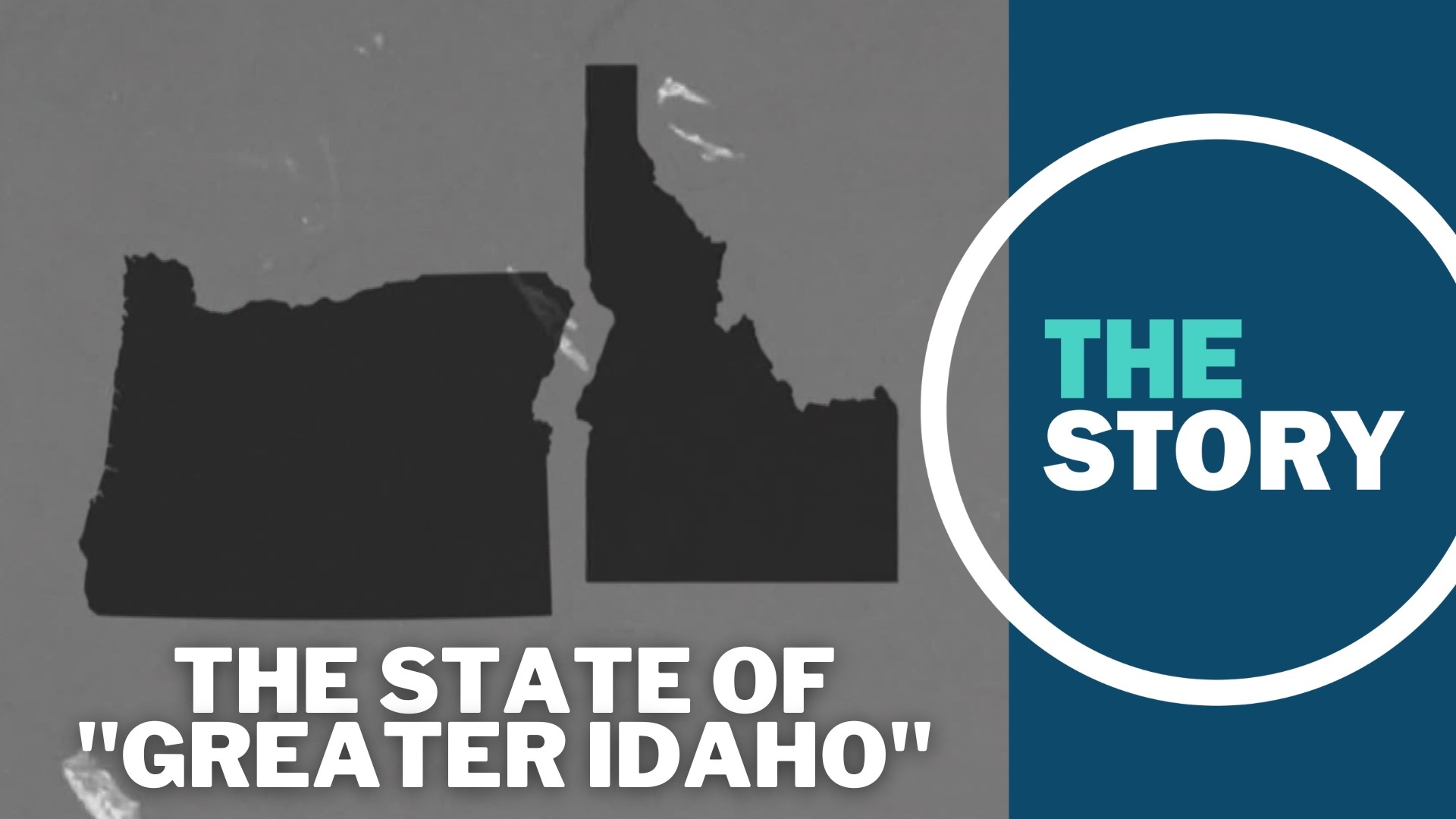SALEM, Ore. — Last week, the Idaho House of Representatives did something fairly unprecedented. The chamber voted to approve a resolution authorizing them to enter talks about annexing a bunch of Oregon counties — the entire eastern half of the state, give or take.
For many Oregonians, perhaps the majority, this is absolute crazy talk. But for many others, especially in eastern Oregon, it's a popular proposition.
The idea behind the "Greater Idaho" movement has been percolating for a few years. The pitch is pretty simple: relocate the border between Oregon and Idaho, and make both states better.
Counties that tend to vote more conservatively in eastern Oregon would join the deep red state of Idaho, while the heavily blue northwestern portion of Oregon would stay the way it is — neatly excising many of the political disagreements in the state.
The idea has gained traction in eastern Oregon due to complaints that are now decades old, ones that bubbled up again during the November midterm election. Many Oregonians in the eastern and southern parts of the state feel like the power brokers in Salem only care about the western, more urban parts of Oregon.
"For a long time, there's been this urban-rural divide," said Matt McCaw, a spokesperson for the Greater Idaho group. "People on the east side of the state have felt like their state-level government has not heard them, has not understood their way of life, their values, their problems, and has enacted policy that doesn't work for us in eastern Oregon."
Over the past few years, counties in eastern and southern Oregon have been voting on ballot initiatives to examine the "Greater Idaho" proposal. Voters in 11 counties have now approved initiatives to explore the idea, with Wallowa County set to vote in May.
But the county-level initiatives don't mean much by themselves — they primarily serve to signal where popular opinion is leaning in a given county.
And the ambitions of "Greater Idaho" have scaled back over time. The group's initial goal was to include parts of northern California, the eastern two-thirds of Oregon and all of southern Oregon, snagging Idaho a piece of the southern Oregon coast. But the movement hasn't gained much momentum in southwestern Oregon, where there are larger pockets of blue voters and an age-old dedication to a different secession scheme, the fabled "State of Jefferson."
Regardless, the movement has gained some traction in Idaho. Last week, the Idaho House of Representatives approved a non-binding resolution that approves talks with Oregon about annexing those eastern counties. Support wasn't unanimous, but it was enough to pass.
"Why wouldn't we at least have a conversation about increasing the size of our state?" argued Idaho Republican Rep. Barbara Ehardt.
"We should not be self-segregating by ideology like this," countered Idaho's House Minority Leader, Democratic Rep. Ilana Rubel. "I think we're on a path to civil war if we keep going down this path. We have got to learn to get along better and work together better. The answer cannot be to carve up the country and redraw lines that have been in place for a century or more, just so we can only be surrounded by people that perfectly agree with us."
The bill still needs to pass in the Idaho Senate. Even if that happens, the bill still only approves talks, not the actual annexation — and the Oregon legislature would need to play ball by passing a similar resolution.
There is a bill in the Oregon legislature meant to accomplish this, Senate Joint Memorial 2 which is sponsored by Republican Sen. Dennis Linthicum of Klamath Falls. Right now the bill is sitting in the Senate Committee on Rules, but there are no hearings scheduled.
It already appears to be a big "if," but if Oregon were to pass a bill like Linthicum's which opens the door to talks with Idaho, the two states would then need to enter an interstate compact for the transfer, should talks come to that conclusion. Finally, Congress would need to approve.
Greater Idaho was always a longshot, and it's come a lot further than many people expected. But the next hurdles it would need to clear are by far the highest.
Regardless, KGW political analyst Betsy Johnson said that the matter is not a joke to many eastern Oregonians, no matter the odds stacked against it, and the grievances that inspired it shouldn't be ignored.
"Many people in the urban areas, particularly Portland dismiss this as just a bunch of cranks in eastern Oregon — this is visceral, real anger," Johnson said.
The problems are real, but Johnson also suggested that Greater Idaho moving forward would be a net negative for Oregon — chilling economic development in the Oregonian rump state, and becoming a "national embarrassment."
"Quit treating the symptoms, get at the root problem and try to figure out, why would a portion of Oregon want to leave here?" she said. "What has made it so bad that they are prepared to go through the administrative and expense and political hassle of trying to separate a piece of Oregon and move it into Idaho?"
After the Idaho House approved its Greater Idaho resolution, Oregon Congressman Earl Blumenauer issued a short statement that echoed the sentiment voiced by Idaho's Rep. Rubel, if more succinctly and with tongue firmly in cheek: "I would entertain a trade for Boise and Sun Valley."

